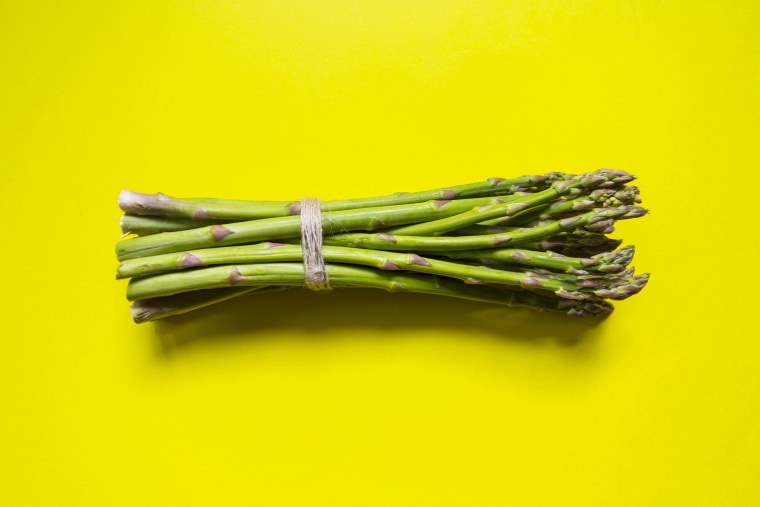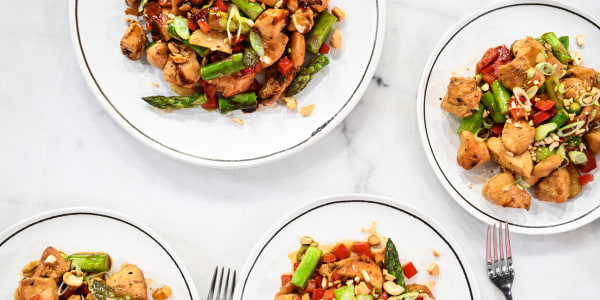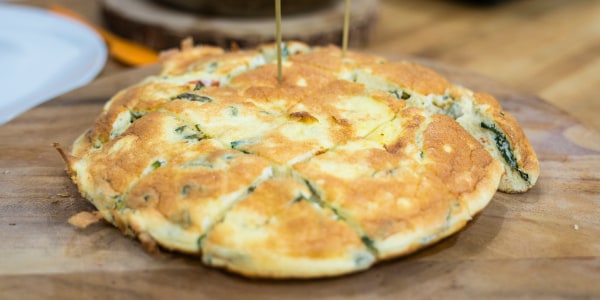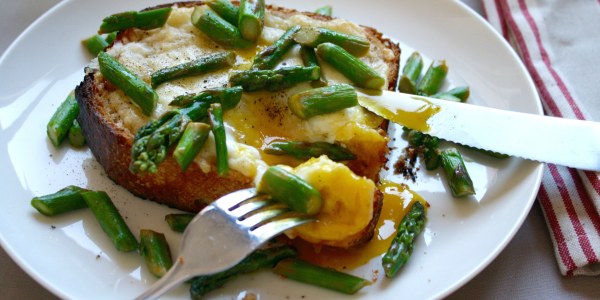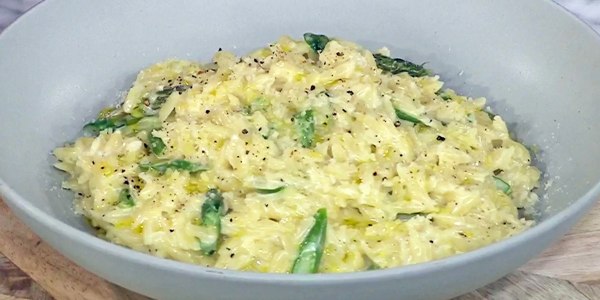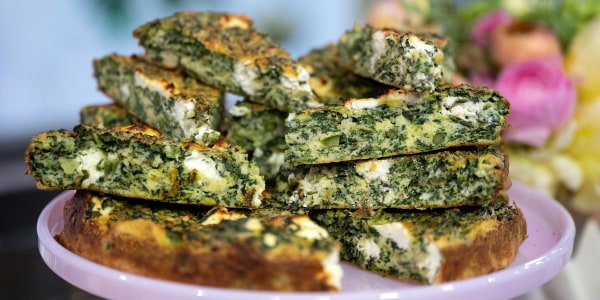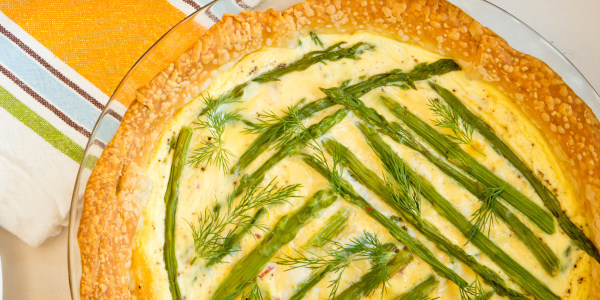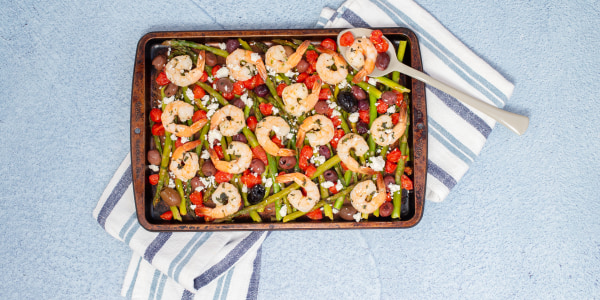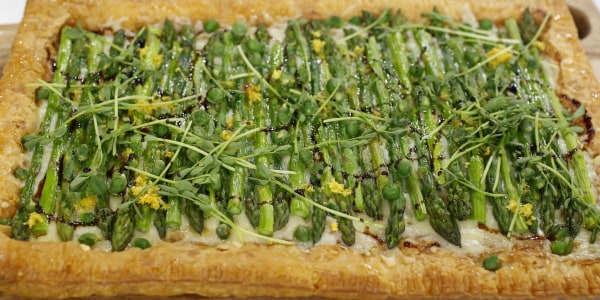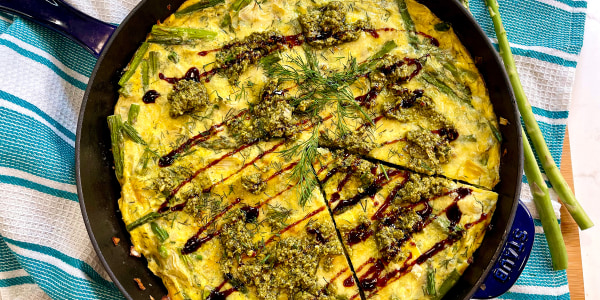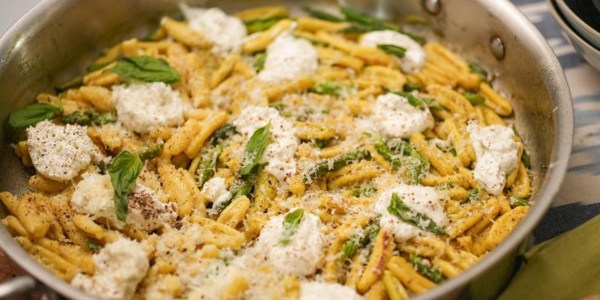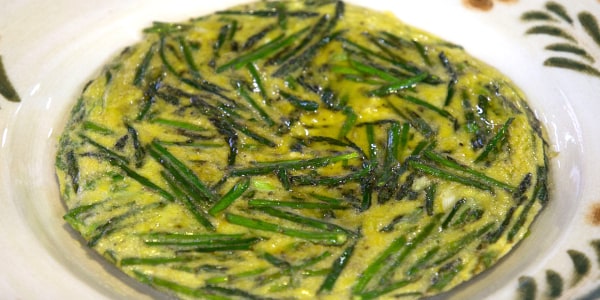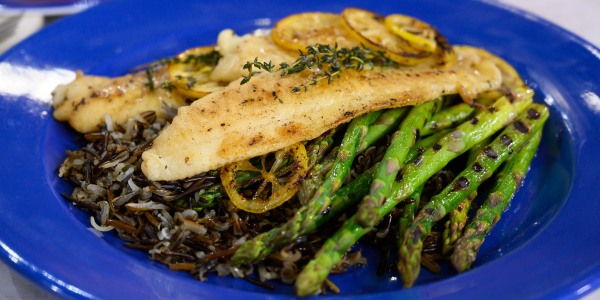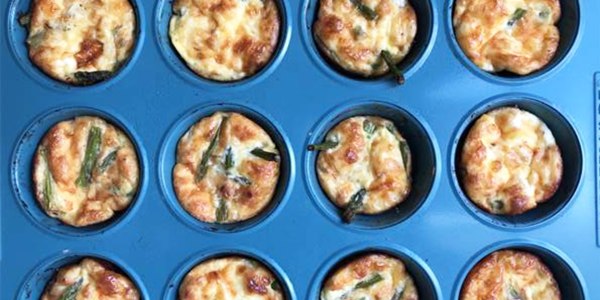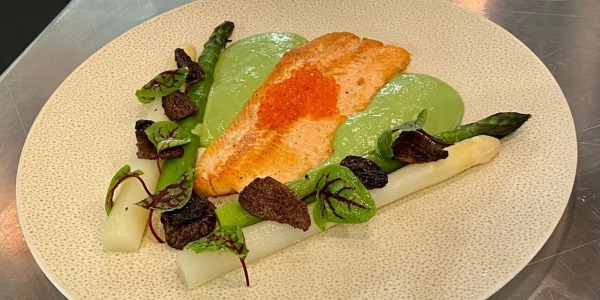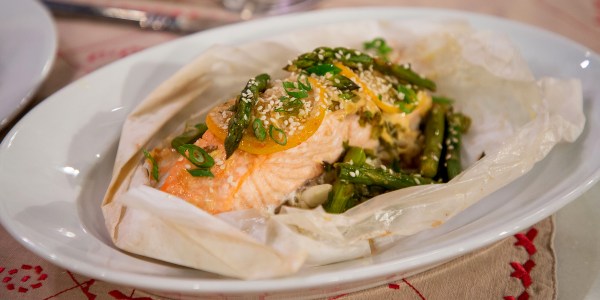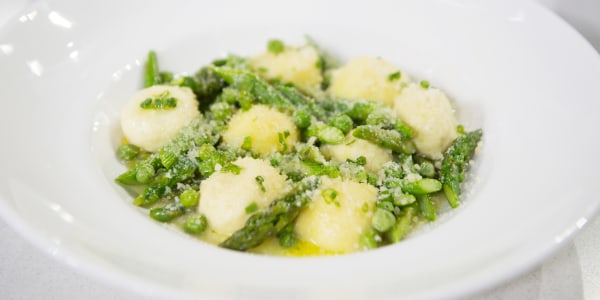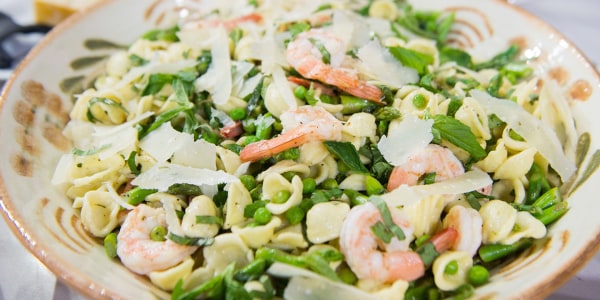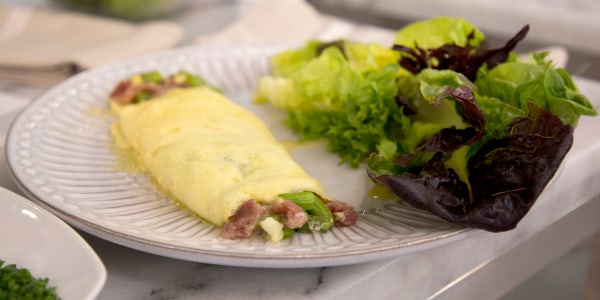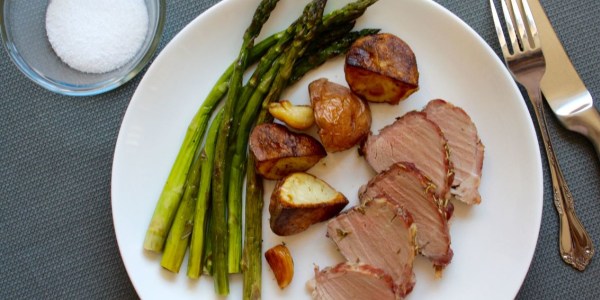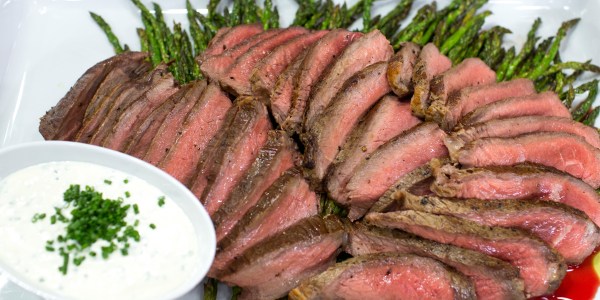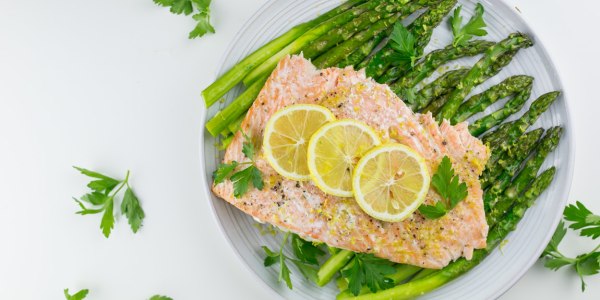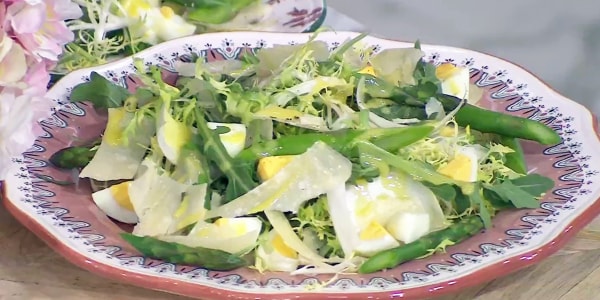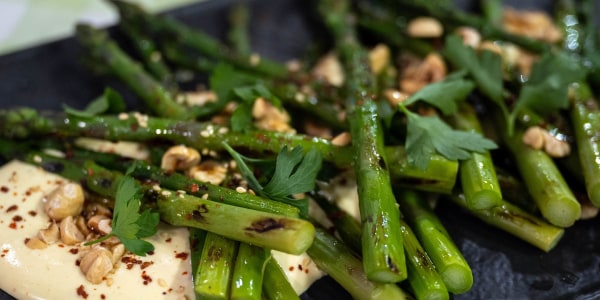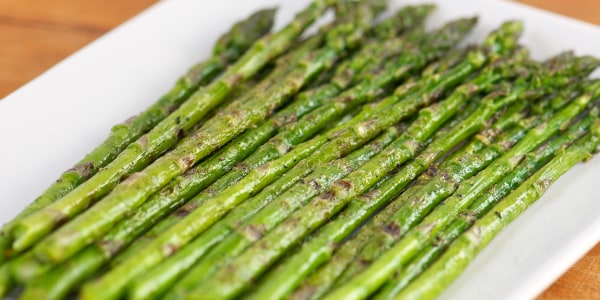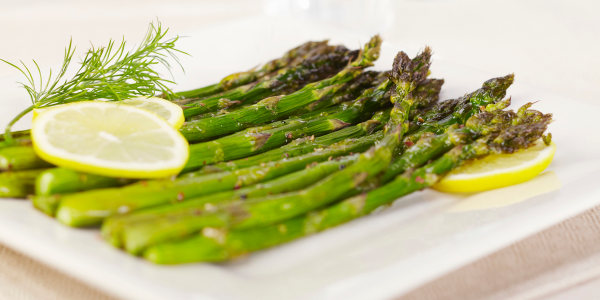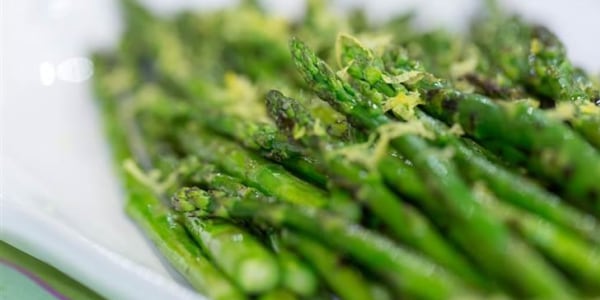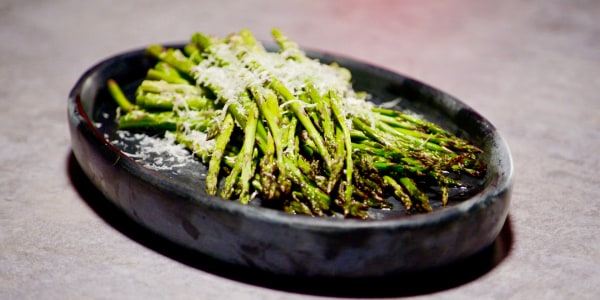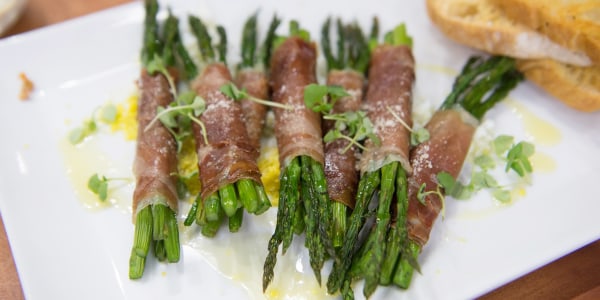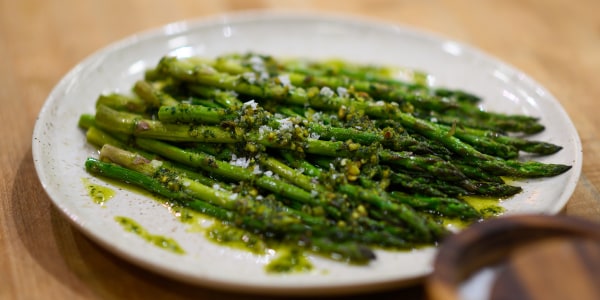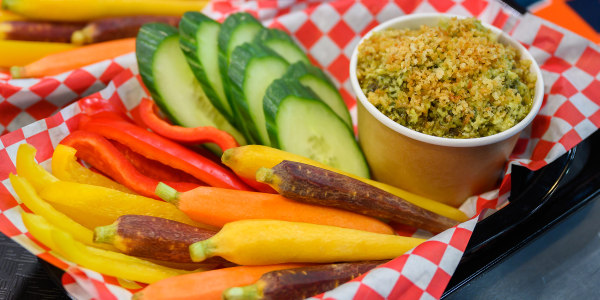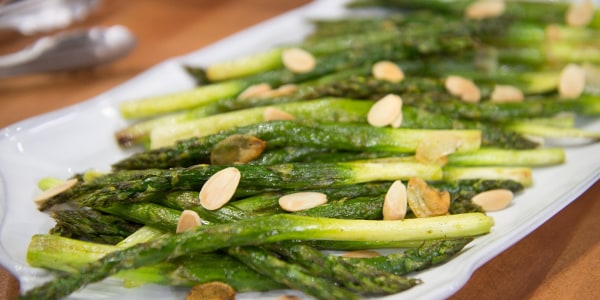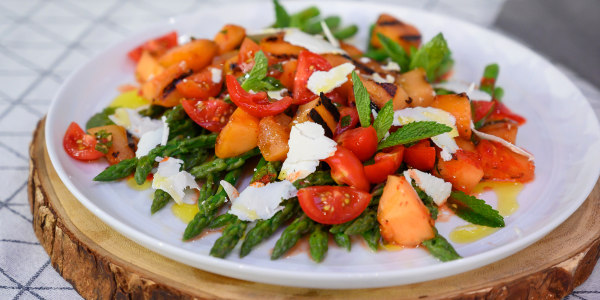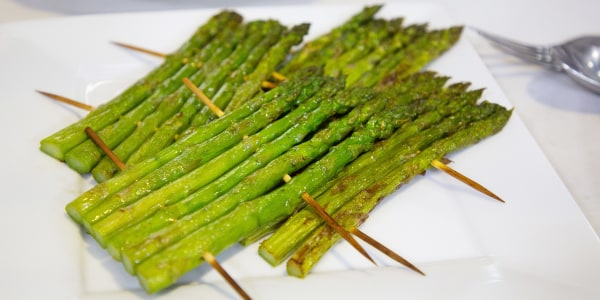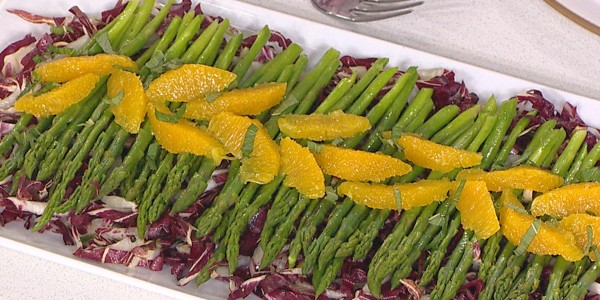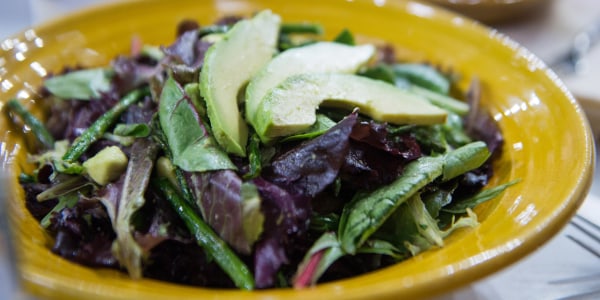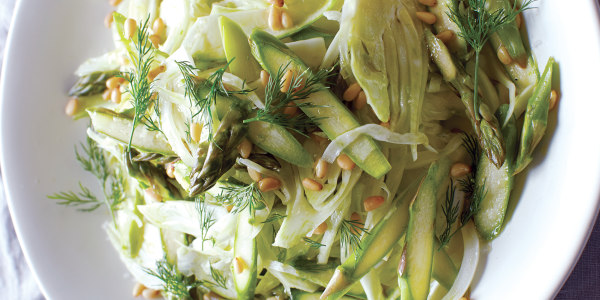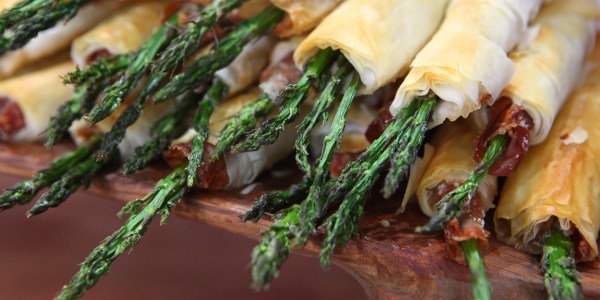If you need a surefire sign that spring has sprung, look no further than the tall rows of asparagus lining the stalls of the farmers’ markets and grocery stores. It’s hard not to notice the vibrant green stalks bundled up in rubber bands. Asparagus’ earthy, slightly sweet flavor undeniably signals the start of spring. This beloved vegetable is not only delicious and nutritious but also incredibly versatile.
Whether grilled, roasted, steamed or eaten raw, asparagus has a unique flavor that you can’t really get from any other vegetable. Early on in the season, the stalks are incredibly tender and sweet. This is the perfect time to prepare them simply — they often need only a drizzle of olive oil and a sprinkle of salt and pepper. As the season goes on, the stalks go from skinny and tall to slightly more plump and stout. With their age, they bring a slightly more earthy flavor, bordering on bittersweet. It’s here that they lend their flavor and texture to dishes like frittatas, savory tarts and comforting pasta dishes.
Luckily, asparagus pairs well with just about anything. It works in harmony with other seasonal vegetables, such as spinach, tomatoes and artichokes. Its flavor still shines when paired with the likes of pungent truffle butter or sharp cheeses like Gruyere and cheddar. This versatility makes it perfect for any breakfast, lunch or dinner. This time of year, asparagus is plentiful, but it’s only at its peak for a short time. Take advantage of spring’s best vegetables by making a handful of these recipes.
Main dishes
Quick, easy and healthy dinners are welcome on our tables year-round. The chicken and asparagus in this recipe mingle with a glossy sesame-soy sauce. Cashews and water chestnuts add even more of a meaty texture.
Whether you’re enjoying a frittata for breakfast, lunch or dinner, it’s a great way to incorporate seasonal ingredients like asparagus and cherry tomatoes into your meal. Here, the eggs are lightened up with some cream; Parmesan and Gruyere cheese add plenty of nutty flavor.
When you’re craving French toast but want something savory, this crispy, cheesy egg toast is the way to go. Thick-cut slices of bread are covered in cheese and given a divot to hold a perfectly cooked egg (set whites and runny yolk). Once the toast is crunchy and the cheese is melted, serve each portion with a few stalks of sautéed asparagus and a drizzle of decadent truffle oil.
What better way to show off the bright vegetal flavors of asparagus than by pairing it with a simple pasta? This cheesy, creamy orzo is made even more special by stirring in a few tablespoons of black truffle butter at the end.
This light and fluffy frittata is studded from top to bottom with bright green vegetables, such as asparagus, leeks, spinach and basil. This frittata is made in a springform pan instead of a skillet, and has a layer of breadcrumbs on the bottom — this prevents the eggs from sticking to the pan and acts as a quiche-like crust.
Save yourself some time by using your favorite store-bought pie crust. While the asparagus spears blanch, simply whisk up the cheesy egg filling, pour it into the crust and bake. You can make this breakfast tart a few days ahead of time — garnish with some fresh dill and no one will be the wiser.
Packed with heart-healthy proteins, good-for-you fats and fresh vegetables, this sheet-pan meal captures the flavors of the Mediterranean in each bite. Asparagus is the star of the show, and it pairs perfectly with the fresh oregano and mint on the shrimp.
If you’re hosting a spring get-together, this delicate asparagus tart is worth consideration. Pile layers of nutty Gruyere cheese, slender asparagus stalks and fresh spring peas onto store-bought puff pastry and watch it become crisp and golden in the oven. Finish it off with some seasonal pea shoots and a generous drizzle of tart balsamic glaze.
Asparagus and artichokes are two of spring’s most delicious vegetables. When they’re at their peak, they provide fresh flavor to this delicate frittata. When you’re ready to serve, drizzle the whole dish with some bright green pesto or balsamic glaze (or both!).
When it comes to pasta, we know that simple is always best. The only thing the sautéed asparagus pasta needs is some garlic, a squeeze of lemon and a dollop of ricotta cheese. Any woodsy stems that are too tough to be eaten outright are blended, strained and added to the pasta to impart even more asparagus flavor into the sauce.
With just three ingredients (not including salt and pepper), this frittata is as simple as it gets. Look for pencil-thin stalks of asparagus — they cook quickly, so the dish comes together in just a few minutes. Everything from sautéing the asparagus to cooking the eggs happens in the same skillet on the stovetop.
This hearty meal comes together in about an hour, and most of that time is waiting for the wild rice to cook. A few minutes before you’re ready to serve, throw a bunch of asparagus on the grill and give the flaky sole fillets a quick sauté in a skillet — they’ll both cook up in no time at all.
These bite-sized frittatas are perfect for easy entertaining or grab-and-go breakfasts on busy days. The creamy egg bites are a fresh way to start the day and are flavored with seasonal asparagus and a whole cup of shredded cheddar cheese.
This is the quintessential spring dinner. A combination of thick green and white asparagus spears are served alongside grilled trout fillets. Everything is finished with a generous drizzle of a sorrel-flavored sauce that’s reminiscent of hollandaise.
Cooking fish and vegetables in parchment pouches (en papillote) is a quick, mess-free way to serve dinner. The steam that’s created inside of the pouch keeps the salmon and asparagus nice and tender. This recipe embraces some simple umami-packed ingredients to add flavor including soy sauce and sesame seeds.
Similar to gnocchi, these tender dumplings are made with ricotta and Parmesan cheese rather than potatoes. Buttery sautéed asparagus and peas are transformed into a bright sauce that coats each individual gnudi.
Once the weather starts to warm up, pasta salad is one of the first things on our minds. This one pairs plump shrimp, asparagus and peas with lots of fresh herbs and an ever-so-slightly creamy apple cider dressing.
When the craving for an omelet arrives, it’s best to lean in — especially with a recipe that’s this quick. Fire up the skillet, crack a few eggs and layer in a few pieces of prosciutto and blanched asparagus stalks. Serve it with a lightly dressed green salad, and breakfast is served.
Dried rosemary and garlic provide all the flavor you’ll need for this quick sheet-pan dinner. The potatoes and asparagus roast to tender perfection while the pork tenderloins become juicy and just barely pink in the center. The pork releases a lot of drippings, so be sure to drizzle some of those over the vegetables.
Broiling sirloin steak is the best way to develop a golden brown crust while maintaining a perfectly medium-rare center. Thick asparagus spears roast under the meat, catching all of the delectable juices. A tangy whipped feta sauce brightens up each bite.
The flavor bomb in this recipe comes in the form of a homemade lemon and garlic-infused oil. The infused oil is drizzled over hearty salmon fillets and asparagus. It’s a meal in and of itself, so serve it fresh right out of the oven.
Side dishes
What better way to give a simple salad a springtime twist than by adding gently blanched bites of asparagus? Dress the salad with a peppery Dijon dressing and thick shavings of good-quality Parmesan cheese.
Grilling asparagus is a great way to prepare the vegetable since the tender stalks cook so quickly. To break up the chargrilled flavor, drizzle a light and floral Meyer lemon dressing over the top and scatter with a fragrant toasted seed and nut mixture. No matter what else you’re serving, this dish is guaranteed to steal the spotlight.
When asparagus is at its peak in the spring months, you don’t need to do much to bring out its flavor. Here, the spears are simply tossed with olive oil, salt and pepper and roasted until tender — a squeeze of fresh lemon juice is a perfect final touch.
All you need is a sheet pan to make this ridiculously easy recipe. Drizzle the bottom of the pan with a touch of olive oil, top with asparagus spears and some basic seasonings and give the pan a quick shake before it goes in the oven. It’s the perfect side for simple main dishes like roast chicken and white fish.
If you’re doing some grilling this season, now is the perfect time to add grilled asparagus to the menu (but you can also make this recipe indoors on a cast-iron grill pan). Look for thin stalks of asparagus — they’ll only take about two minutes to cook through.
Bring all of the cheesy, peppery flavors of the iconic pasta dish to your asparagus by incorporating Pecorino Romano cheese and plenty of cracked black pepper. The asparagus spears roast with some cheese, which becomes melty and fragrant. No one will turn down another sprinkle of cheese once the asparagus comes out of the oven.
These asparagus and prosciutto bundles are roasted in a hot oven until the prosciutto becomes crisp and begins to render its fat. Some of the butter is melted with paprika and spread over crunchy ciabatta toasts, while the rest is browned and drizzled over the dish.
This verdant green side dish practically screams spring. Make a quick homemade pesto with pistachios, fresh parsley and basil, lemon and garlic and drizzle it over simple roasted asparagus. If you have any leftover pesto, it’s delicious stirred into pasta or spooned over chicken or shrimp.
This spread is the perfect mix of herbaceous pesto and creamy cheese dip. The asparagus is roasted and blended into a pesto with fresh basil, mint and parsley, then combined with feta and white cheddar and baked to create a refreshing dip for crackers or crudité.
The nuttiness of the toasted almonds is a wonderful complement to the simple, earthy flavors of the asparagus. The asparagus spears are roasted along with some thin slices of garlic, which turn golden, crispy and slightly sweet in the oven.
This recipe sits at the crossroads of melon and asparagus seasons. While the sweet, juicy cantaloupe sits on the grill, the asparagus spears simmer in a buttery thyme-infused sauce. Calabrian chili paste makes this dish even more flavorful.
The unique presentation is what sets this roasted asparagus dish apart from the rest. The spears are threaded onto skewers and left to roast on a sheet pan. Since you can easily flip the “rafts” instead of turning each individual asparagus spear, every side is guaranteed to cook perfectly.
This salad has all of the flavor boxes checked — the earthy asparagus and fresh mint complement the sweet oranges and slightly bitter endive. Orange zest and juice is used in the simple vinaigrette, and while orange segments are scattered over the asparagus.
Looking for a quick salad to whip up for lunch? While the asparagus roasts, you can prepare the rest of the salad — whisk together a simple lemon-honey mustard vinaigrette and toss it with the roasted asparagus, mixed greens and hearty-healthy sliced avocado.
Put your knife skills to the test with this slaw recipe. Very thin slices of raw fennel and asparagus are lightly sweetened with agave nectar and lemon juice and tossed with toasted pine nuts and fresh dill. And don’t forget about the fennel fronds — they add a more mild anise flavor to the salad.
These crispy asparagus and prosciutto cigars are perfect for passing around during cocktail hour — and you only need a handful of ingredients to make them. Roll sheets of phyllo dough around thin slices of prosciutto, skinny asparagus spears and Parmesan cheese and bake until golden and crisp.
